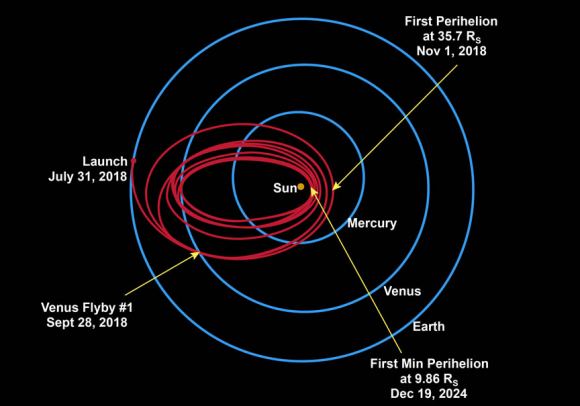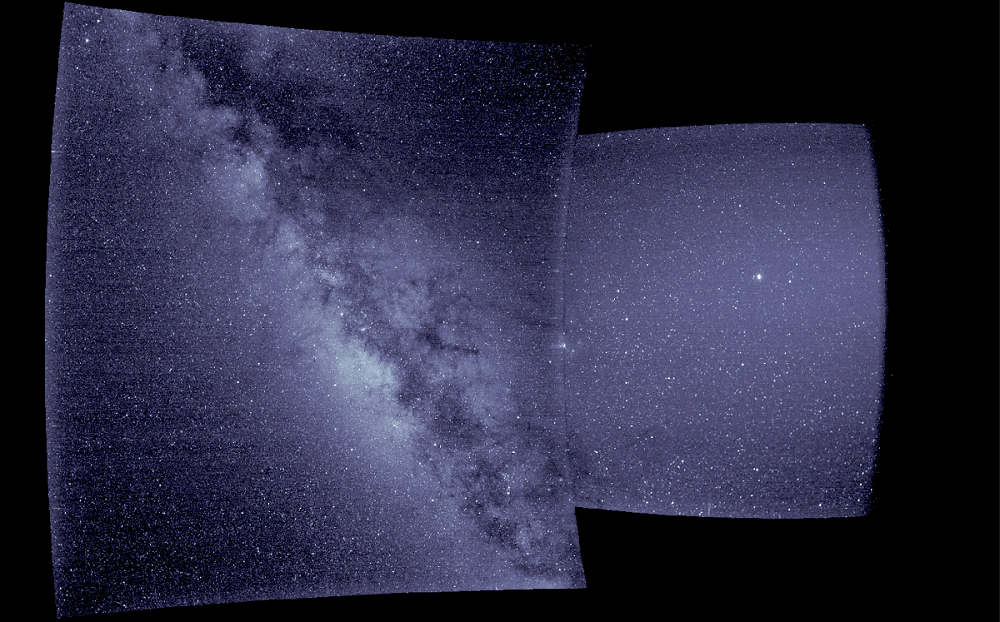On August 12th, 2018, NASA launched the first spacecraft that will ever “touch” the face of the Sun. This was none other than the Parker Solar Probe, a mission that will revolutionize our understanding of the Sun, solar wind, and “space weather” events like solar flares. Whereas previous missions have observed the Sun, the Parker Solar Probe will provide the closest observations in history by entering the Sun’s atmosphere (aka. the corona).
And now, just over a month into the its mission, the Parker Solar Probe has captured and returned its first-light data. This data, which consisted of images of the Milky Way and Jupiter, was collected by the probe’s four instrument suites. While the images were not aimed at the Sun, the probe’s primary focus of study, they successfully demonstrated that the Parker probe’s instruments are in good working order.
These instruments consist of the FIELDS magnetometer, the Wide-Field Imager for Parker Solar Probe (WISPR) imager, the Solar Wind Electrons Alphas and Protons (SWEAP) investigation, and the Integrated Science Investigation of the Sun (ISIOS) instrument. These instruments will work in tandem to measure the Sun’s electric and magnetic fields, particles from the Sun and the solar wind, and capture images of the Sun’s corona.
The images that were acquired (shown at top, left to right) were taken by the WISPR instrument’s outer and inner telescopes, respectively. The image on the left, which has a 58° field of view and extends to about 160° from the Sun, shows the disc of the Milky Way and is focused on the galactic center. The image on the right, which has a 40° field of view and is 58.5 degrees from the Sun’s center (from its right edge) shows Jupiter as a bright dot.
When the Parker Solar Probe reaches the Sun, we can expect images of a very different kind. Basically, WISPR will take pictures of coronal mass ejections (CMEs), jets and other ejecta from the Sun. The purpose of this will be to asses the large-scale structure of the corona, solar wind and ejecta before the spacecraft flies through them. Once the probe reaches the corona or flies through these “space weather” events, the craft’s other instruments will take in-situ measurements.
The probe will be able to image the solar atmosphere thanks to the Parker Probe’s heat shield, which will block most of the Sun’s light and protect its instruments from harmful radiation. The cameras also rely on radiation-hardened Active Pixel Sensor CMOS (complementary metal oxide semiconductor) detectors and BK7 glass, which is more resistant to radiation and hardened against impacts from tiny particles.

Tests of the spacecraft’s instruments began in early September and will be followed shortly by the commencement of the probe’s science operations. This week (on September 28th), it will conduct its first flyby of Venus and perform its first gravity assist with the planet by early October. This will cause the spacecraft to assume a 180-day orbit of the Sun, which will bring it to a distance of about 24 million km (15 million mi).
The probe will conduct several gravity-assist maneuvers with Venus over the course of the next seven years, gradually bringing itself to a minimum distance of 5.9 million km (3.7 million miles) to the Sun by 2025. However, we can expect to see some more images from this mission long before then. In total, the probe will conduct 24 passes of the Sun, and each pass is sure to involve some stunning images.
And what the probe does discovers when it flies into the Sun’s corona, effectively getting closer to the Sun than any previous mission in the history of spaceflight, is sure to keep scientists busy for years to come!
Further Reading: NASA

